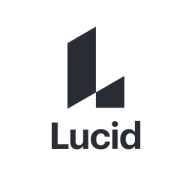

| Product | Market Share (%) |
|---|---|
| Lucidchart | 24.8% |
| Visio | 29.6% |
| draw.io | 16.0% |
| Other | 29.599999999999994% |
| Product | Market Share (%) |
|---|---|
| No Magic MagicDraw | 2.7% |
| Visio | 12.5% |
| Camunda | 11.3% |
| Other | 73.5% |


| Company Size | Count |
|---|---|
| Small Business | 23 |
| Midsize Enterprise | 14 |
| Large Enterprise | 21 |
| Company Size | Count |
|---|---|
| Small Business | 14 |
| Midsize Enterprise | 1 |
| Large Enterprise | 7 |
Our online diagram application makes it easy to sketch and share professional flowchart diagrams. From brainstorming to project management, we support all of your communication needs. That’s why millions of users choose Lucidchart.
No Magic MagicDraw is a versatile solution designed to enable users to work on everything from business processes to architecture or software and system modeling.
No Magic MagicDraw is an extremely robust solution that is designed for a range of professionals. This product is invaluable to business analysts, software analysts, programmers, QA engineers, and documentation writers. It is a highly dynamic and versatile tool that can aid in the analysis and design of Object Oriented (OO) systems. It maximizes the ability of teams to work in tandem by allowing everyone working on a particular project to automatically gain access to the newest version of the model that they are working on. This way everyone can work on their part of the project without having to worry about updating each part of the project individually.
Benefits of No Magic MagicDraw
Some of the benefits of using No Magic MagicDraw include:
Reviews from Real Users
No Magic MagicDraw stands out among its competitors for a number of reasons. Two major ones are the way that it enables users to efficiently create models and the overall robustness of the solution. Users are given the ability to efficiently and accurately model the requirements of whatever it is that they are creating. No Magic MagicDraw provides users with many valuable features that allow them to maximize what they can do with the solution.
PeerSpot user Wayne L., a Systems Engineer at SIMTRS, notes the way in which No Magic MagicDraw allows users to create models more efficiently. He writes, “We are getting away from the old ways of writing a lot of papers and requirements documents, architecture documents, technical solution documents, interface documents - those days are gone. MagicDraw allows you to model the requirements, and by doing so, you've got a good chance of not missing any requirements. The old way of doing things was to decompose the requirements into shell statements. But when you model it, you will be able to practically make sure you don't miss anything. MagicDraw has a good modeling tool you use for case diagrams. Its use case diagram is part of the UML and SysML that you can use to model requirements to create an architecture. I've created a lot of architectures for the Army and also mapped those components of the architecture as the test procedures.”
PeerSpot user Terry J., the president at I2R, Inc., notes the robustness of No Magic MagicDraw when he writes, "When you look at it, No Magic is an all-encompassing tool. You can use it for business architecture design. You can use it for deploying an ERP system across your enterprise. However, it was initially designed and developed for model-based systems engineering. That's the systems engineering required to either produce an IP system or product. It takes away the mounds of paper and puts it into a model. It enables you to generate significant savings by modeling that new product or that system before you ever start developing a prototype."
We monitor all Mind Mapping Software reviews to prevent fraudulent reviews and keep review quality high. We do not post reviews by company employees or direct competitors. We validate each review for authenticity via cross-reference with LinkedIn, and personal follow-up with the reviewer when necessary.